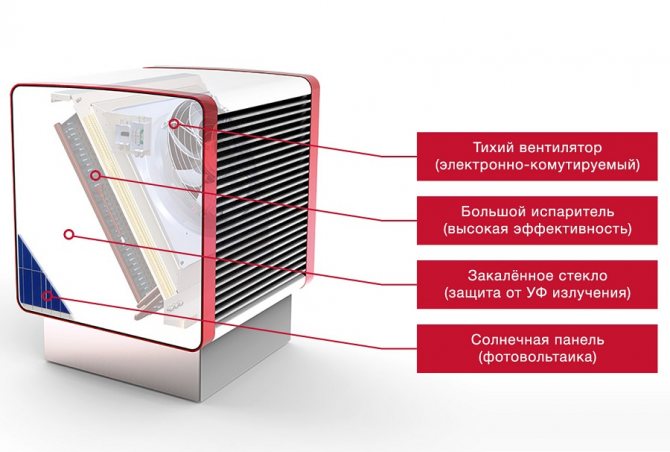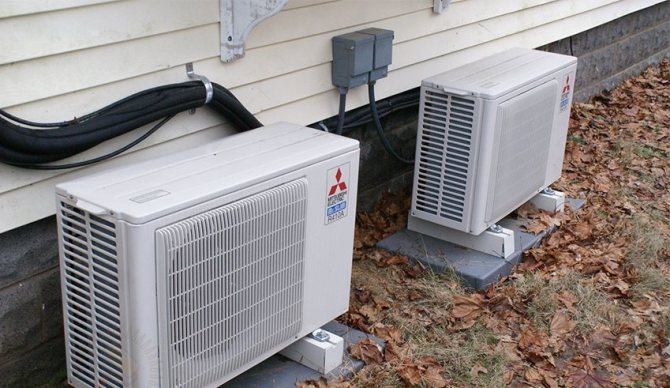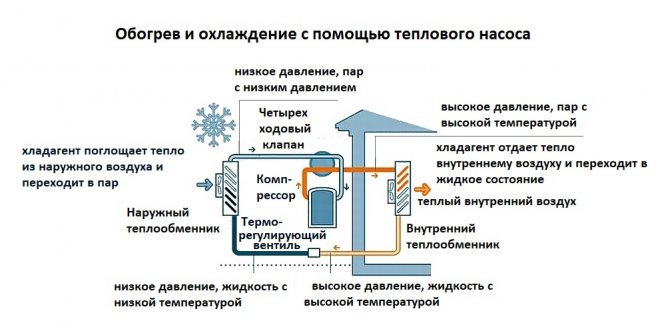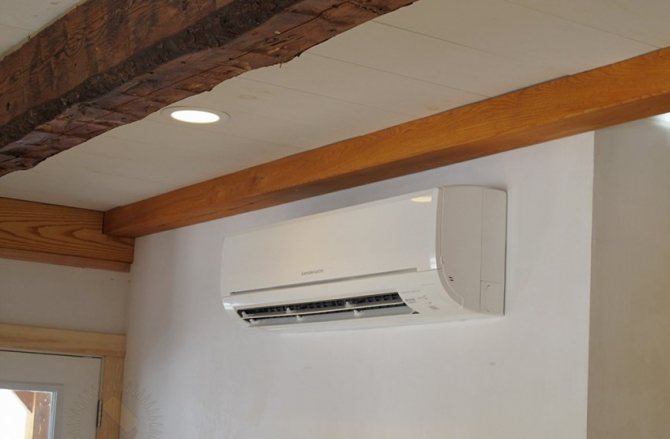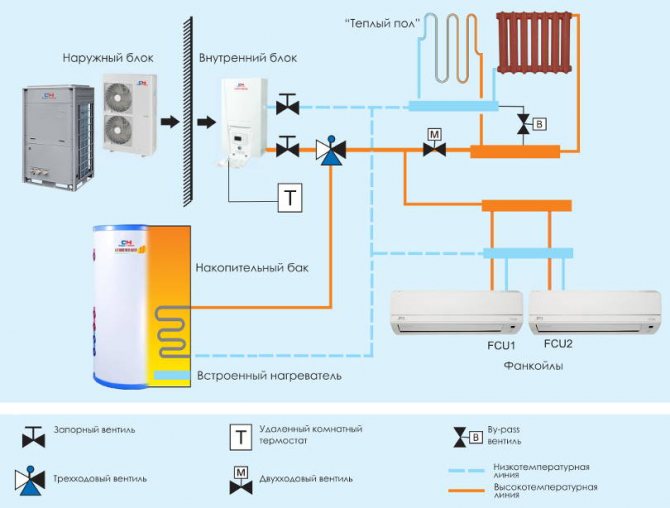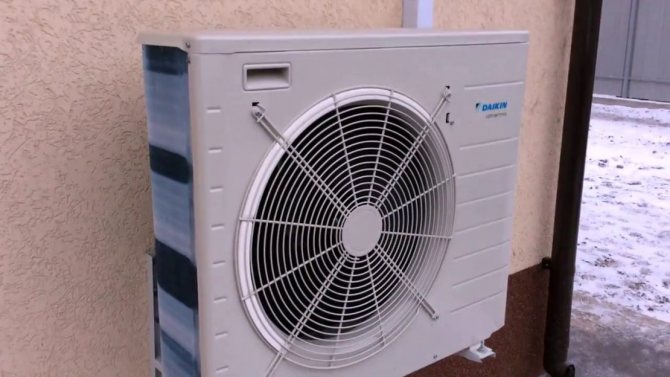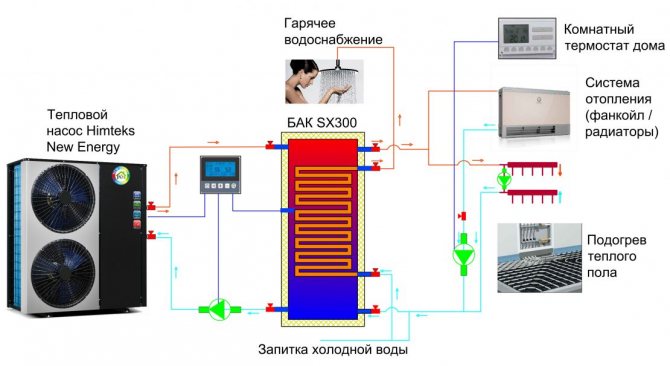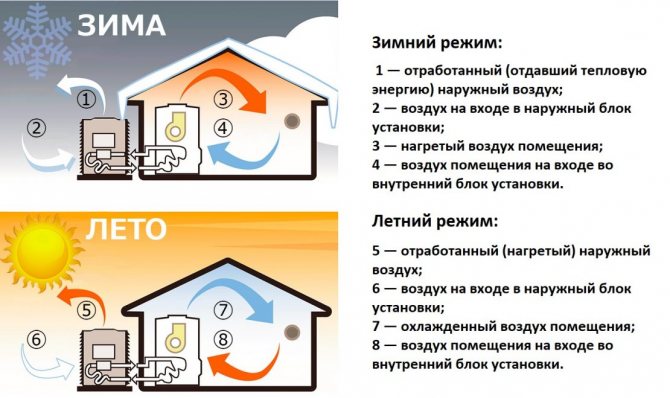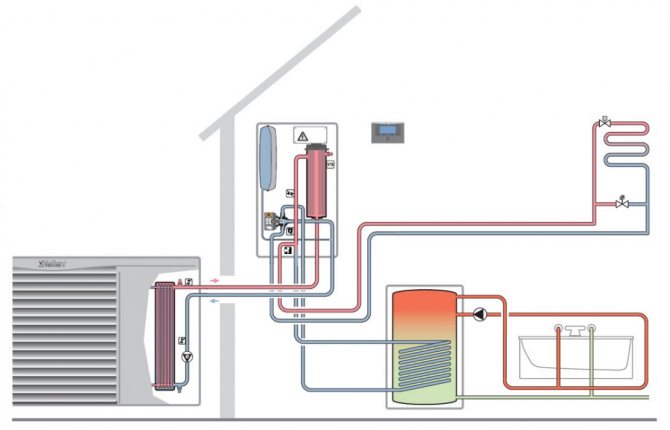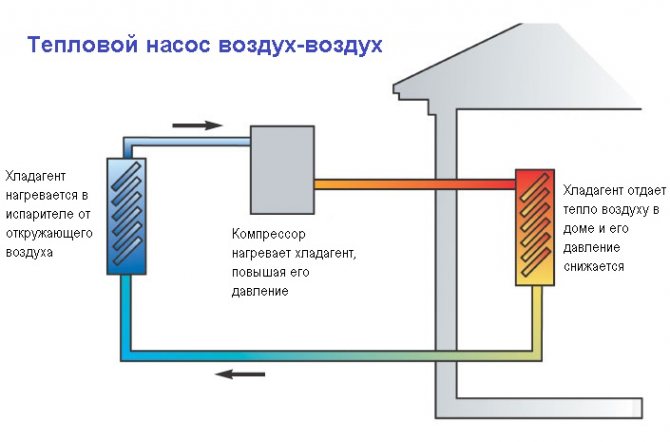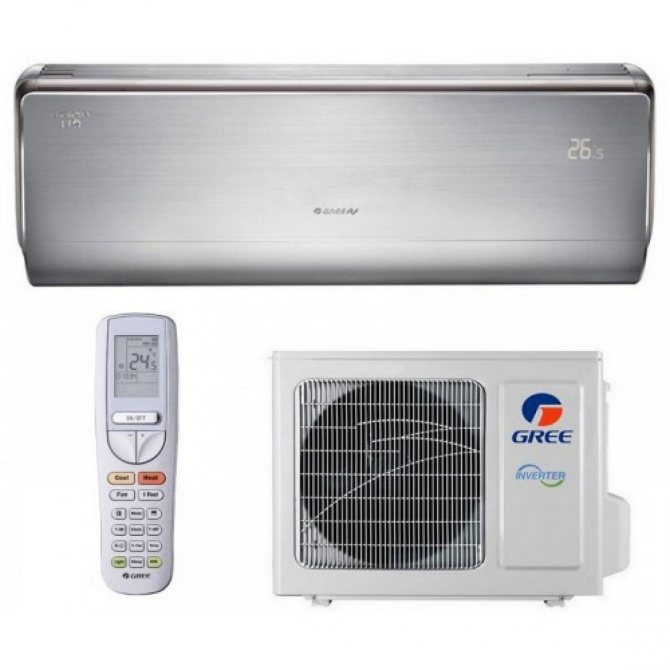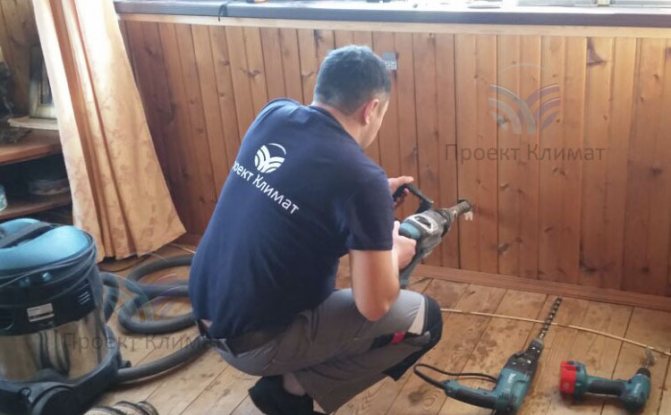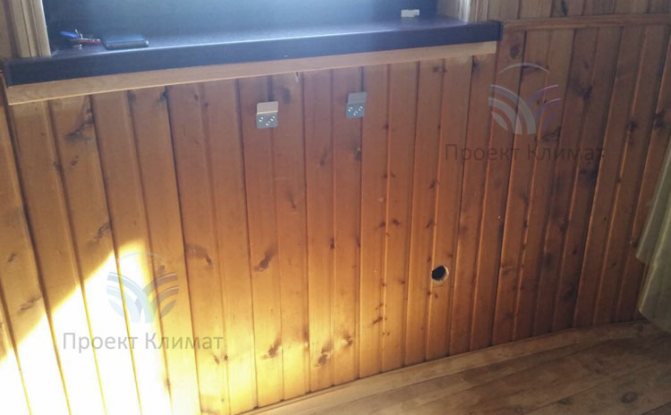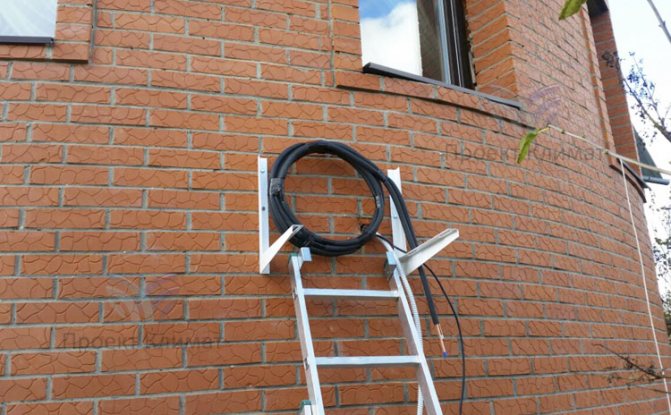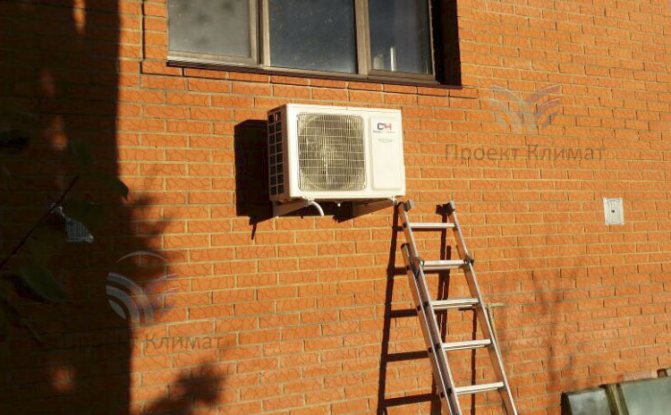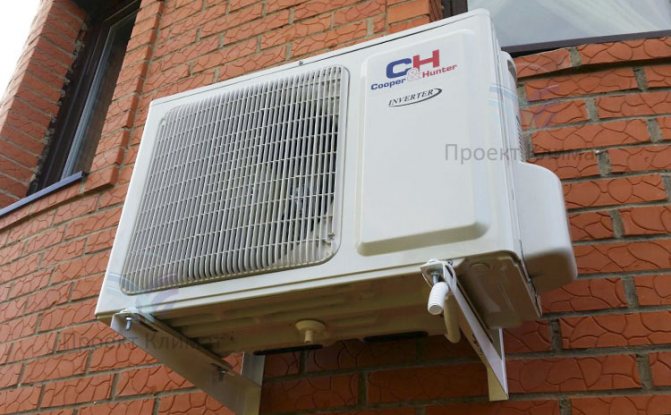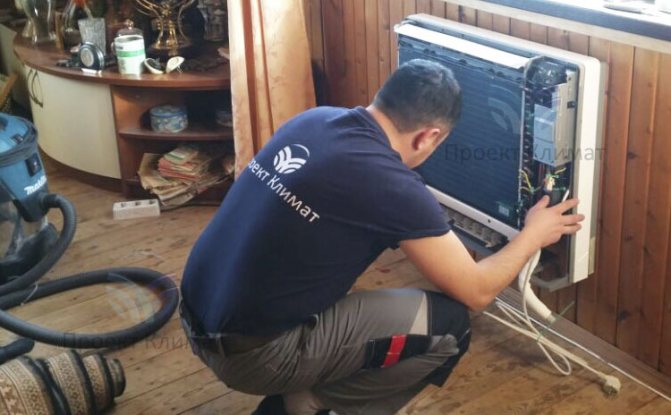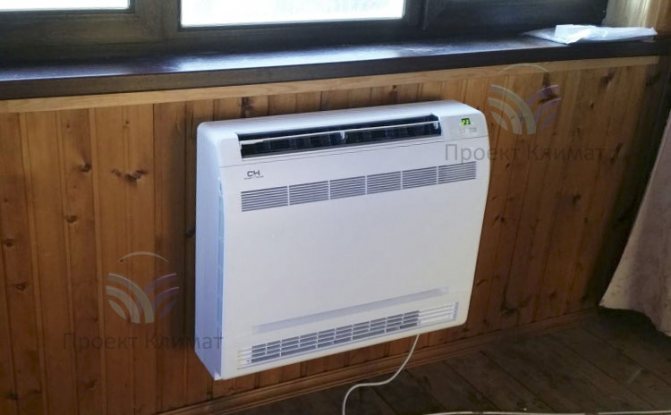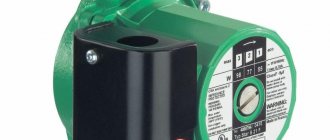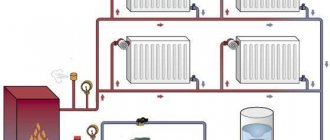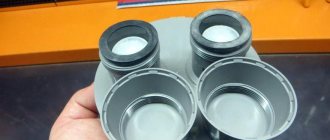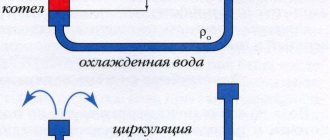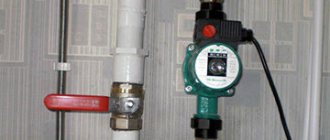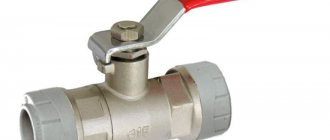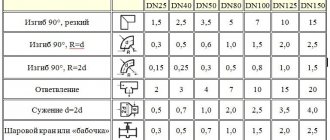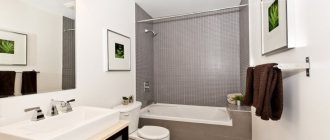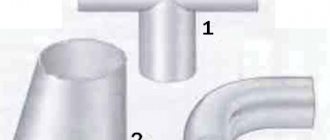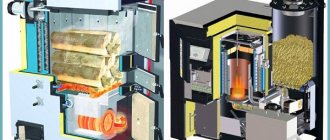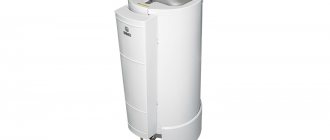Register Login
Date of publication: March 11, 2019
Air-to-air heat pumps are most often used where it is impossible to equip a heat exchanger circuit underground. The reason for this may be financial constraints, lack of groundwater or free space on the site for horizontal installation of the system, the presence of solid layers at a shallow depth, and other circumstances. In these cases, an air-to-air heat pump is the only reasonable alternative. The solution is suitable for those people who want to build an environmentally friendly heating structure, but have a small amount of money to implement the project.
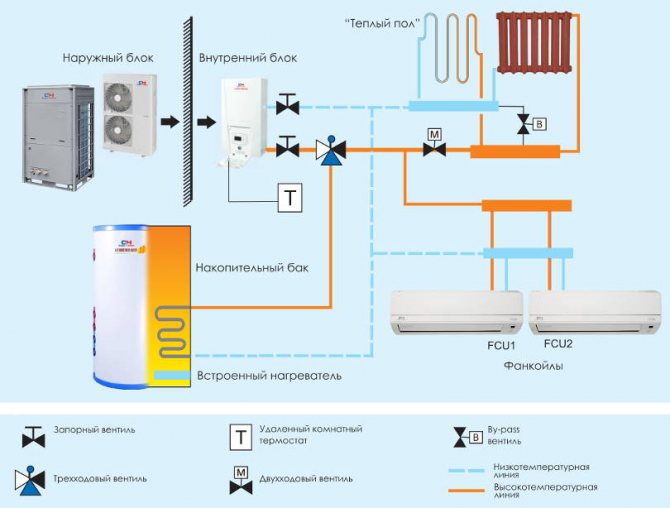
Why not firewood?
Our neighbors mainly heat wood-burning stoves, but this option was initially not pleasant. Every year it is necessary to stock up on fuel, clean the boiler, and monitor its combustion. With electricity, everything is much simpler - I pressed the toggle switch, the heat started. The only disadvantage of this method is the high cost of electricity. At the time of the start-up of the heating system, a kilowatt-hour in the Moscow region cost 5.29 rubles.
Naturally, we wanted to use such a valuable resource as economically as possible, so we settled on an air-to-air heat pump. This is the cheapest option, it works almost like an air conditioner.
Arrangement of an air heating system
Air heating is better suited for use with a heat pump than traditional water systems with bulky and expensive radiators, since it does not require heating the heating medium to a very high temperature. The heated air is distributed in the living area through the duct system. This eliminates quite significant heat losses that are inevitable when transporting hot water.


For an air-to-air heat pump, you can use various types of air ducts, most often these are reliable structures made of galvanized steel
The heated air from the heat exchanger enters the filter and then into the air duct system. At the same time, a certain amount of outside air is added to it. This ensures not only heating of the room, but also correct air exchange.
Of course, a sufficiently powerful fan is needed to transport warm air. Air ducts are usually laid along the walls of rooms, and warm air comes from supply grilles, which are advisable to be placed near windows. In addition, the system is equipped with thermostats that allow automatic control of space heating.
To install an air heating system, you will have to stock up on:
- special blowers;
- a set of supply grilles;
- aluminum reinforced tape;
- a set of fasteners;
- tool for working with galvanized steel.
Both rigid and flexible air ducts are successfully used to transport hot air. For rigid structures, additional bends will be needed to turn the direction of the air flow at the required angle (degrees).
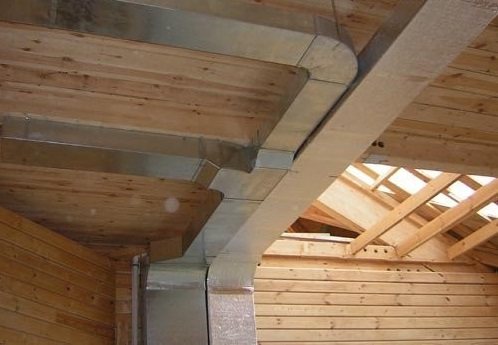

If you plan to install air heating even at the stage of building a house, you can hide the air ducts in the wall or under the false ceiling. Otherwise, they are covered with special decorative elements.
It is best to install the air duct system at the stage of building a house. Then they can be built directly into the walls. If the decision is made later, the air ducts are placed along the walls and hidden with decorative grilles.
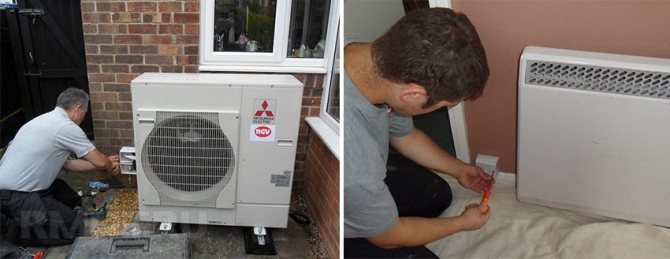

Equipment operating parameters
Severe frosts in the Moscow region are rare, experience has shown that the temperature rarely drops below -25 ℃. It was calculated that in such conditions a pump that produces 15 kW of heat will be enough for the house of the available area. The system budget cost us about 150,000 rubles.
The efficiency of air pumps also changes depending on external conditions. In our case, it turned out that with the consumption of 1 kilowatt-hour of electricity, the system produced 2-2.5 kW of heat. It's minimum. If there is a light thaw outside with a temperature slightly above zero, then it gives out 3.5 kW of heat.
The house is evenly warmed up by the warm air, there are no radiators or warm floors. Fresh outside air is constantly added to the system through the recuperator.
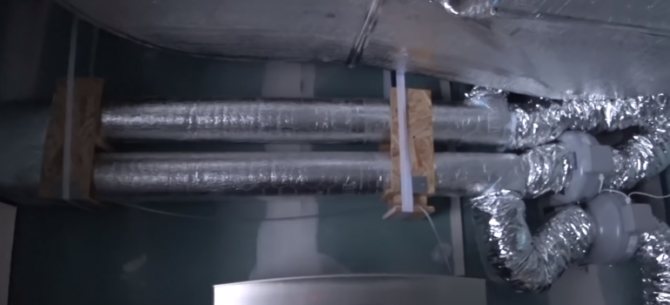

The task of the recuperator is to save additional heat. With its help, the air coming from the street is heated by the one that is forcibly thrown out of the house, for example, from the bathrooms. The desired room temperature is set on the remote control.
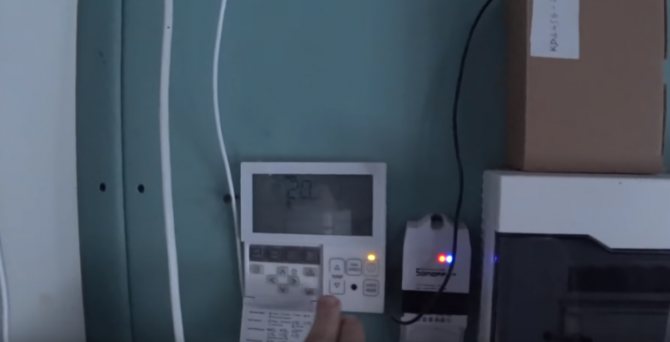

Automatic control, at night the temperature is reduced for greater comfort.
Benefits of using
The high efficiency of an air-to-air heat pump is achieved by creating the smallest difference between the temperature of the air from which heat is taken and the temperature in the heating system. This condition is easiest to fulfill in an area with a temperate climate and mild winters. In northern latitudes with low temperatures, the effectiveness of such equipment decreases.
The solution has numerous advantages. Advantages of heating a house with air-to-air heat pumps:
- simple system design, convenient installation and operation. No need to drill wells, lay communications, allocate a separate room for equipment;
- suitable for any climate;
- the equipment can be installed in a constructed building with an operating standard heating system. The solution saves money on the laying of additional communications. Installation requires minor adjustments to the existing structure;
- installation is cheaper when comparing the solution with other types of heat pumps;
- long service life;
- short payback period;
- energy consumption is below average;
- the equipment operates in an autonomous mode, has compact dimensions, does not create noise pollution;
- the air-to-air heat pump circuit allows it to be used in summer to cool the space. With high-efficiency air filters, a comfortable microclimate is easily ensured inside the house.
Distribution of heat to rooms
Each room needs its own amount of heat. For example, in corner rooms, more of it is always required, because they have two cold walls. We solved the distribution problem with the help of gate valves.
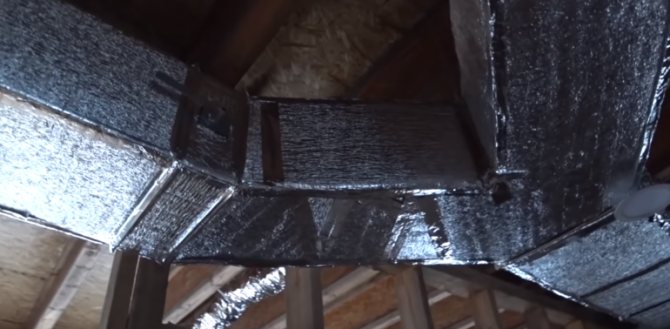

In other places, the flow is regulated by valves on the grates. They stand not only in the ceiling, but also in the floor. This is very important for uniform heating and comfort - everyone knows that warm air rises up. The air intake for exhaust from the premises is arranged in a similar way - it is produced both from the ceiling and from the floor.
It has already been mentioned how the air is removed from the bathrooms: to the street through the recuperator, so the spread of odors throughout the house does not occur.
How an air-to-air heat pump works
The system is based on the same principle that applies to geothermal pumping units. The main difference is that heat is taken not from the soil or water environment, but from the external airspace. In this case, the building is heated by heating the air inside the premises.
A heat pump for heating an air-to-air home has a relatively simple design. To use it, you do not need to drill wells and lay the contour underground.The unit is designed with indoor and outdoor units. The outer part of the system is called evaporative and is mounted so as to be adjacent to the building from the street.
The principle of operation of the unit is quite simple. The outdoor unit extracts heat from the surrounding air masses, which then heats up the refrigerant. It begins to boil and transform into gas. The compressor then compresses the substance, increasing its temperature. The heat is directed to the interior of the condenser located in the building. The circuit works permanently and is controlled by automation. The process stops only when the system manages to provide the set temperature in the room.
If you have any questions about the operation of the equipment, you can ask for clarification from the workers installing the system. They will tell you in more detail how the heat pump works, enlighten you about the rules for operating equipment.
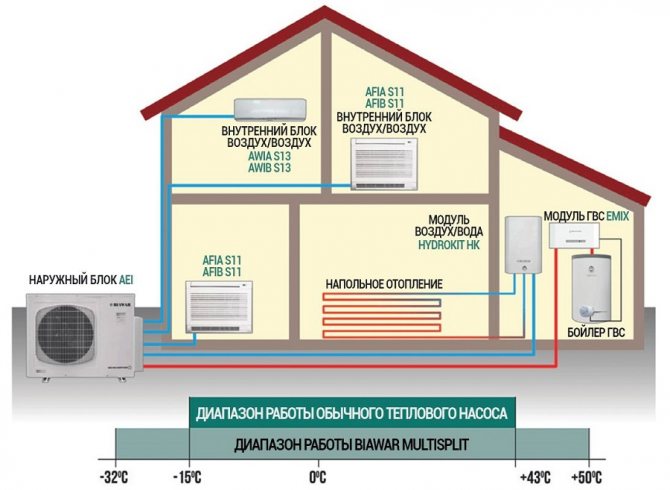

Outer part
The outdoor unit of the heat pump is located behind the air-transparent louvers. It is large enough and looks like an industrial air conditioner. In winter, the pump body freezes over and is covered with a dense snow coat. This is a process provided for in its work - according to its internal algorithms, the equipment regularly goes to defrost and completely thaws. After that, everything is repeated.
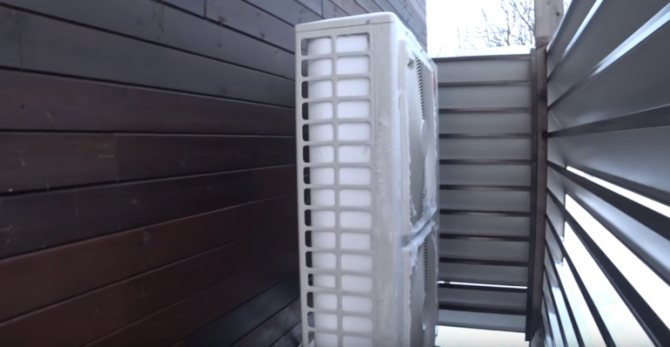

Is it possible to do it yourself
Despite the technical complexity of heat pumps, they can be installed independently. More precisely, with your own hands you are free to carry out all the "dirty work": laying technical pipelines and power supply networks, hanging indoor and outdoor units. The passport documentation for each specific type of heat pump contains comprehensive information about the conditions for installing the blocks, the slope, the length and permissible bends of technical routes.
All that remains afterwards is to invite a specialist who will check the correctness of the installation of the system and ensure its correct commissioning. These works cannot be done by yourself: equipment is required for cleaning and de-airing the system, charging the refrigerant - in general, this process is quite technological and complex.
It should be emphasized that the installation of such air conditioning systems is not done "overnight". A detailed preliminary calculation is required, in particular, it is necessary to determine the class of equipment suitable for specific climatic conditions and calculate its sufficient power. Of course, district heating based on heat pumps causes even more difficulties in the design and coordination of work with construction contractors.
Conclusions based on the results of use
The entire turnkey ventilation and heating system cost about 280,000 rubles. Here it is necessary to take into account that the work was carried out on our own, and when purchasing equipment and materials, the talents of "knocking out" discounts were used to the maximum.
Many do not believe that in our latitudes it is possible to heat the air heated by electricity. From our own experience, we can say that this is real. Such systems work and even save money. The average monthly amount for heating in our country is 6000-8000 rubles. From the experience of neighbors with houses of a similar size, we know that they pay both 20,000 and 25,000 rubles a month. It turns out that all our costs for installing an air-to-air heat pump will fully pay off in about 2 years.
How is the calculation of the power of the equipment
A small amount of heat is present in the air even when the temperature has dropped to -20 degrees Celsius. It is important that it is suitable for heating a house using an autonomous structure. To calculate the required parameters, special software is usually used. You can use online systems that have fields for specifying numerical values.Here you can specify the area of the room and the height of the ceilings. Sometimes it is allowed to set the temperature range specific to the region.
The heat pump is able to function even in severe frosts, but it will work with less efficiency. The temperature range from -10 to +10 degrees Celsius is favorable for the system. In order not to be mistaken when choosing a pump, it is worth considering the factors:
- refrigerant volume;
- the total surface area of the coils in the external and internal blocks;
- planned volume of heat transfer.
Since the system has a relatively simple design, even a master with little experience in handling equipment can install it. But it is advisable to entrust the calculations to specialists. At a minimum, they should be consulted. Experts will help to determine the necessary coefficients, calculate the air-to-air heat pump taking into account all factors. In central Russia, a unit with a capacity of 5 kilowatts is enough for a house with an area of 100 square meters.
